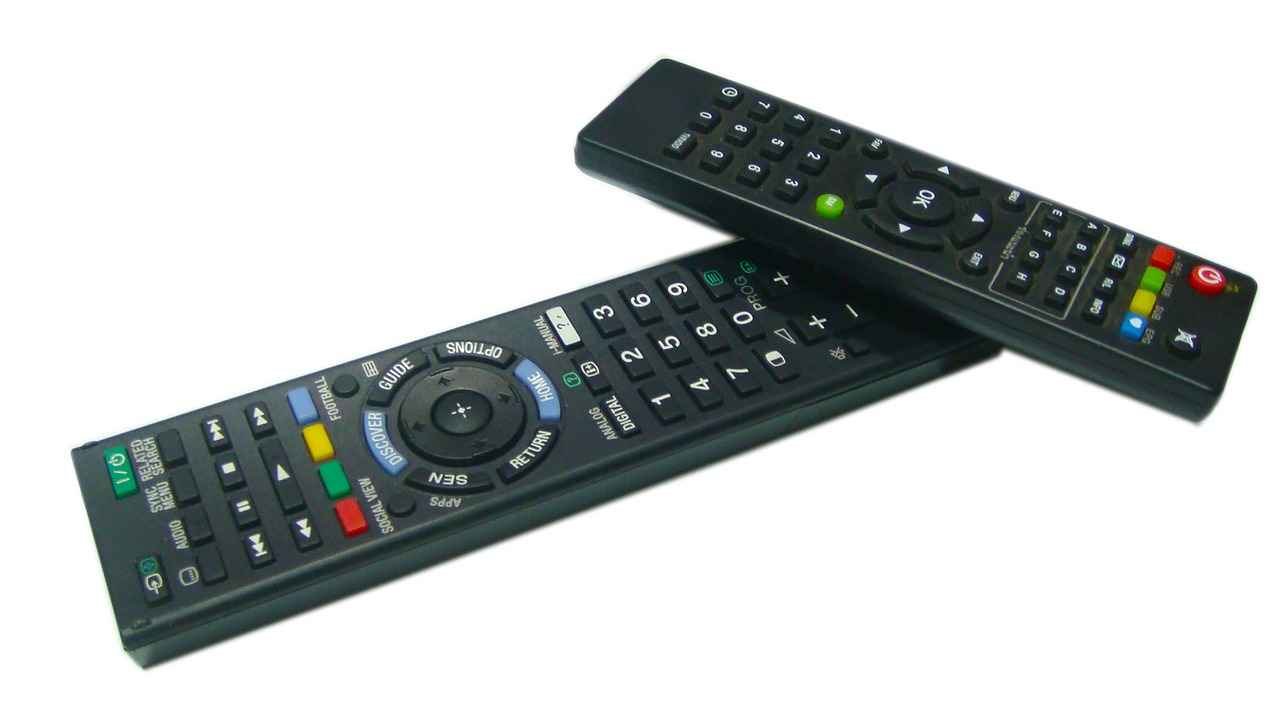This article explores effective strategies and tips to enhance productivity while working remotely in part-time data entry jobs, ensuring you achieve optimal performance and work-life balance.
Understanding Remote Data Entry Jobs
Remote data entry jobs involve inputting, updating, and managing data from a home office. Understanding your role is crucial for success in this field. These positions often require attention to detail and the ability to work independently.
Setting Up Your Home Office
Creating an efficient workspace is essential for productivity. A well-organized home office can significantly improve focus and work efficiency. Here are some key elements to consider:
- Choosing the Right Equipment: Investing in quality equipment, such as a reliable computer, ergonomic chair, and high-speed internet, can enhance your performance in data entry tasks.
- Importance of Ergonomics: Ergonomics play a vital role in preventing strain and injuries. A comfortable setup can lead to longer, more productive work sessions.
- Essential Software Tools: Utilizing the right software tools, such as spreadsheets and database management systems, can streamline your data entry processes and improve accuracy.
Creating a Structured Work Schedule
A well-defined work schedule helps maintain focus and productivity. Establishing specific work hours can also support a healthy work-life balance, allowing you to separate work time from personal time.
Minimizing Distractions While Working
Distractions can hinder productivity. Identifying common distractions and implementing strategies to minimize them is crucial for remote workers. Here are some tips:
- Establishing Boundaries: Communicate your work hours to family and friends to minimize interruptions.
- Using Productivity Techniques: Techniques like the Pomodoro Technique can help manage time effectively, allowing for focused work sessions followed by short breaks.
Staying Motivated in a Remote Environment
Maintaining motivation while working remotely can be challenging. Implementing strategies to stay engaged is key to productivity:
- Setting Personal Goals: Setting achievable personal goals can provide a sense of accomplishment and keep you motivated throughout your workday.
- Joining Online Communities: Engaging with online communities of remote workers can provide support, resources, and motivation.
Regularly Reviewing Your Progress
Periodic reviews of your work can help identify areas for improvement and reinforce productive habits in your data entry tasks. Consider:
- Utilizing Performance Metrics: Tracking your performance metrics can provide insights into your productivity levels.
- Seeking Feedback: Constructive feedback from supervisors can guide your development and enhance your skills in data entry work.
Conclusion: Achieving Success in Remote Data Entry
By implementing these strategies, you can enhance your productivity in remote data entry jobs, achieving a balance between work and personal life while ensuring high-quality performance.

Understanding Remote Data Entry Jobs
Remote data entry jobs are becoming increasingly popular as businesses seek to streamline their operations and reduce overhead costs. These positions typically involve inputting, updating, and managing data from the comfort of your home office. With the rise of digital platforms, the demand for skilled data entry professionals continues to grow, making it a viable option for those seeking flexible work opportunities.
In this role, you will be responsible for ensuring that information is accurately recorded and maintained. This may include tasks such as:
- Entering data into spreadsheets or databases
- Updating existing records to reflect current information
- Verifying data accuracy through various checks
- Managing files and ensuring data is organized
Understanding your specific responsibilities is crucial for success in this field. It is important to develop strong attention to detail and organizational skills, as any errors in data entry can lead to significant issues for the business. Additionally, familiarity with various software tools, such as Microsoft Excel or Google Sheets, is often required.
Moreover, remote data entry jobs offer flexibility, allowing you to set your own hours and work at your own pace. However, this also means you must be self-motivated and disciplined to meet deadlines and maintain productivity. Establishing a structured work environment and routine is essential to thrive in this role.
In conclusion, remote data entry jobs provide an excellent opportunity for individuals looking to work from home while contributing to a company’s success. By understanding the nuances of this role, you can position yourself for success in the evolving landscape of remote work.

Setting Up Your Home Office
Creating an efficient workspace is essential for productivity, especially when working remotely. A well-organized home office can significantly improve focus and work efficiency, allowing you to achieve your goals effectively. Below are some key considerations and strategies for setting up your home office.
- Designate a Specific Area: Choose a quiet corner of your home that is free from distractions. This space should be dedicated solely to work, helping you mentally separate work from personal life.
- Invest in Quality Furniture: Your desk and chair are crucial for comfort and posture. Opt for an ergonomic chair that supports your back and a desk at the right height to prevent strain.
- Optimize Lighting: Good lighting can reduce eye strain and enhance your mood. Utilize natural light when possible, and consider adding a desk lamp to brighten your workspace.
- Keep Your Workspace Organized: Use organizers, shelves, and filing systems to keep documents and supplies easily accessible. A clutter-free environment fosters better concentration.
- Incorporate Technology: Ensure you have reliable technology, including a high-speed internet connection, a good quality computer, and any necessary software tools that facilitate your work.
- Personalize Your Space: Adding personal touches, such as plants or artwork, can make your workspace more inviting and enjoyable, boosting your motivation.
In conclusion, setting up your home office is a vital step in enhancing your productivity while working remotely. By following these guidelines, you can create a space that not only meets your functional needs but also supports your mental well-being, leading to more efficient work sessions and a better work-life balance.
Choosing the Right Equipment
is a crucial step in enhancing your productivity in remote data entry jobs. The right tools can significantly impact your efficiency and overall work experience. Here, we will explore the essential equipment that can help you perform at your best.
- Reliable Computer: A dependable computer is the backbone of your data entry tasks. Opt for a machine with a fast processor and sufficient RAM to handle multitasking. This will ensure smooth operation, especially when using resource-intensive software.
- Ergonomic Chair: Comfort is key when working long hours. An ergonomic chair supports your posture and reduces the risk of strain or injury. Look for features like adjustable height, lumbar support, and comfortable cushioning.
- High-Speed Internet: A stable and fast internet connection is essential for seamless data entry. It prevents interruptions and allows you to upload and download files quickly, which is vital for maintaining productivity.
- Additional Monitors: Using dual monitors can greatly enhance your workflow. This setup allows you to view multiple documents or applications simultaneously, reducing the time spent switching between screens.
- Keyboard and Mouse: Invest in a high-quality keyboard and mouse. Mechanical keyboards can provide better tactile feedback, while an ergonomic mouse can reduce wrist strain during extended use.
In summary, investing in quality equipment such as a reliable computer, ergonomic chair, and high-speed internet can significantly enhance your performance in data entry tasks. By prioritizing comfort and efficiency, you set yourself up for success in your remote work environment.
Importance of Ergonomics
In today’s fast-paced work environment, especially for those engaged in remote data entry jobs, ergonomics has become a crucial aspect of maintaining health and productivity. A well-designed workspace can significantly reduce the risk of strain and injuries, allowing individuals to work comfortably for extended periods.
Ergonomics encompasses the study of how people interact with their work environment. By applying ergonomic principles, you can create a workspace that not only promotes comfort but also enhances your overall efficiency. Here are some key benefits:
- Reduced Risk of Injury: Proper ergonomics can help prevent common issues such as carpal tunnel syndrome, back pain, and eye strain. Investing in ergonomic furniture and accessories, like an adjustable chair or a keyboard wrist rest, can make a significant difference.
- Increased Comfort: A comfortable setup allows you to focus better on your tasks. When your body feels good, your mind can concentrate on the work at hand, leading to improved performance.
- Enhanced Productivity: Comfortable workers are often more productive. A well-structured workspace encourages longer, uninterrupted work sessions, enabling you to complete tasks more efficiently.
- Better Posture: Ergonomics emphasizes the importance of maintaining good posture. Proper alignment can help reduce fatigue and discomfort, allowing you to maintain your focus throughout the day.
To implement ergonomic practices in your home office, consider the following tips:
1. Invest in an ergonomic chair that supports your lower back.2. Position your computer screen at eye level to avoid neck strain.3. Use a footrest if your feet do not comfortably reach the floor.4. Take regular breaks to stretch and move around.
In conclusion, prioritizing ergonomics in your workspace is essential for anyone working remotely, particularly in data entry roles. By creating a comfortable and efficient setup, you can enhance your productivity while safeguarding your health.
Essential Software Tools
In the realm of remote data entry jobs, leveraging the appropriate software tools is crucial for ensuring efficiency and accuracy. Utilizing tools such as spreadsheets and database management systems can significantly streamline your data entry processes, allowing you to focus on the quality of your work rather than the mechanics of data handling.
Why Software Tools Matter
The right software can drastically reduce the time spent on repetitive tasks. For instance, spreadsheets like Microsoft Excel or Google Sheets offer functionalities such as formulas, data validation, and pivot tables, which can automate calculations and data organization. This not only saves time but also minimizes human error, enhancing overall accuracy.
Database Management Systems
On the other hand, database management systems (DBMS) like MySQL or Microsoft Access provide a robust framework for managing large datasets. These systems allow for efficient data retrieval, storage, and manipulation, making them essential for projects that involve handling extensive information.
- Enhanced Collaboration: Many modern software tools offer cloud-based solutions, enabling multiple users to work simultaneously on the same dataset. This feature is particularly beneficial for remote teams.
- Data Security: Utilizing dedicated software tools helps ensure that sensitive information is stored securely, reducing the risk of data breaches.
- Real-time Updates: Updates made in a shared document or database can be seen in real time, facilitating better communication and coordination among team members.
Conclusion
In conclusion, investing in the right software tools is a fundamental step towards achieving efficiency in remote data entry jobs. By embracing technologies such as spreadsheets and database management systems, you can streamline your processes, enhance accuracy, and ultimately improve your productivity.
Creating a Structured Work Schedule
is essential for maximizing productivity in remote data entry jobs. A well-defined schedule not only enhances focus but also contributes to a healthier work-life balance. Here’s how to effectively establish your work hours and maintain productivity.
When working remotely, it can be tempting to allow work to spill over into personal time. However, setting specific work hours helps create a clear boundary between professional and personal life. This separation is crucial for mental well-being and can lead to higher efficiency during work hours.
- Define Your Work Hours: Choose a start and end time that aligns with your peak productivity levels. Whether you are a morning person or a night owl, find a schedule that suits your natural rhythm.
- Stick to Your Schedule: Consistency is key. Try to adhere to your defined hours as closely as possible to foster a routine that signals to your brain when it’s time to work.
- Incorporate Breaks: Plan short breaks within your work hours. Techniques like the Pomodoro Technique, which involves working for 25 minutes followed by a 5-minute break, can enhance focus and prevent burnout.
Additionally, consider utilizing tools like digital calendars or task management apps to organize your daily tasks. These resources can help you visualize your workload and prioritize tasks effectively.
Furthermore, it’s important to communicate your work schedule to family and friends. Informing them of your availability can help minimize interruptions, allowing you to maintain concentration during your work hours.
In conclusion, a well-structured work schedule is a vital component of productivity in remote data entry jobs. By establishing clear work hours and incorporating breaks, you can achieve a healthy balance that promotes both focus and personal well-being.

Minimizing Distractions While Working
In the realm of remote work, particularly for data entry jobs, distractions can significantly impede productivity. Understanding and addressing these distractions is essential for creating an effective work environment. Below, we explore common interruptions and provide actionable strategies to minimize them.
Identifying Common Distractions
- Family Interruptions: Family members may not recognize your work hours, leading to unexpected disruptions.
- Digital Distractions: Social media notifications and personal emails can easily divert your attention.
- Environmental Noise: Sounds from outside or household activities can break your concentration.
- Multitasking: Attempting to juggle work with household chores can reduce overall efficiency.
Strategies to Minimize Distractions
Implementing effective strategies can help in reducing distractions:
- Establish Clear Boundaries: Inform family and friends of your work schedule to minimize interruptions. Consider using a “do not disturb” sign during work hours.
- Create a Dedicated Workspace: Designate a specific area in your home for work. This separation can help signal to your brain that it’s time to focus.
- Limit Digital Distractions: Use apps that block distracting websites during work hours. Turn off non-essential notifications on your devices.
- Incorporate Breaks: Follow techniques such as the Pomodoro Technique, which promotes focused work sessions followed by short breaks. This can refresh your mind and improve concentration.
Conclusion
By recognizing common distractions and implementing these strategies, remote workers can significantly enhance their productivity. Creating a focused work environment is crucial for achieving efficiency and maintaining a healthy work-life balance.
Establishing Boundaries with Family and Friends
In the realm of remote work, particularly in data entry jobs, maintaining focus is essential for productivity. One effective way to achieve this is by communicating your work hours clearly to family and friends. This practice not only minimizes interruptions but also fosters a more professional work environment at home.
When you share your work schedule with those around you, you set clear expectations. This proactive approach helps others understand when you are available for social interactions and when you need to concentrate on your tasks. Here are some strategies to effectively establish these boundaries:
- Be Transparent: Let your family and friends know your specific work hours. This transparency can prevent misunderstandings and reduce the likelihood of interruptions.
- Create a Visual Schedule: Consider posting a visual schedule in a common area of your home. This can serve as a constant reminder of your work hours for everyone in the household.
- Use Signals: Implement a system of signals, such as a closed door or a “do not disturb” sign, to indicate when you are working and should not be interrupted.
- Set Consequences: Politely explain the impact of interruptions on your work. Let them know that frequent disturbances can hinder your productivity, which may affect your work performance.
By taking these steps, you create an environment that respects your work time, allowing you to maintain focus and efficiency. This not only enhances your productivity but also helps family and friends understand the importance of your work commitments.
In conclusion, establishing boundaries with family and friends is a crucial aspect of working remotely. By effectively communicating your work hours, you can minimize distractions, enhance your focus, and ultimately achieve greater success in your data entry tasks.
Using Productivity Techniques
In the realm of remote data entry jobs, effective time management is crucial for maintaining productivity and achieving a healthy work-life balance. One such method that has gained popularity is the Pomodoro Technique. This technique encourages individuals to break their work into focused intervals, typically lasting 25 minutes, followed by a short break of about 5 minutes. This approach not only helps in maintaining concentration but also prevents burnout.
To implement the Pomodoro Technique effectively, follow these steps:
- Choose a Task: Select a specific task that requires your attention.
- Set a Timer: Use a timer to keep track of your 25-minute work session.
- Work Intensively: Focus solely on the task during this period without any distractions.
- Take a Short Break: After the timer goes off, take a 5-minute break to recharge.
- Repeat: After completing four Pomodoros, take a longer break of 15-30 minutes.
This structured approach not only enhances focus but also allows for regular intervals of rest, which are essential for maintaining mental clarity and reducing fatigue. Additionally, you can use productivity apps that are designed to support this technique, making it easier to track your sessions and breaks.
Moreover, combining the Pomodoro Technique with other productivity methods, such as the Two-Minute Rule—where you tackle any task that can be completed in two minutes immediately—can further enhance your efficiency. By integrating these techniques, remote workers can create a personalized productivity system that caters to their specific needs and work styles.
In conclusion, utilizing productivity techniques like the Pomodoro Technique can significantly improve your performance in remote data entry jobs. By managing your time effectively, you can achieve focused work sessions followed by rejuvenating breaks, ultimately leading to greater productivity and job satisfaction.

Staying Motivated in a Remote Environment
Maintaining motivation while working remotely can be a significant challenge for many individuals. The absence of a traditional office environment often leads to feelings of isolation and disconnection. However, by implementing effective strategies, you can enhance your engagement and productivity. Here are some practical approaches to help you stay motivated:
- Set Clear Goals: Establishing specific, achievable goals can provide direction and a sense of purpose. Break larger tasks into smaller, manageable objectives to maintain focus and motivation.
- Create a Daily Routine: A structured daily routine can help mimic a traditional work environment. Designate specific hours for work, breaks, and personal time to create a balanced schedule.
- Designate a Workspace: Having a dedicated workspace can signal to your brain that it’s time to focus. Ensure that your workspace is comfortable and free from distractions.
- Incorporate Breaks: Regular breaks are essential for maintaining energy levels and preventing burnout. Techniques like the Pomodoro Technique, which involves working for 25 minutes followed by a 5-minute break, can enhance productivity.
- Stay Connected: Engage with colleagues through virtual meetings or chat platforms. Regular communication can foster a sense of community and keep you motivated.
- Celebrate Achievements: Acknowledge and celebrate both small and large accomplishments. This practice can boost your morale and reinforce your commitment to your work.
By incorporating these strategies, you can create a more engaging and productive remote work experience. Remember, staying motivated is a continuous process that requires effort and adaptation. Regularly assess your strategies and adjust them as needed to maintain your enthusiasm and productivity.
Setting Personal Goals
is a crucial aspect of maintaining motivation and achieving success, especially in remote data entry jobs. By defining clear and achievable goals, you can create a roadmap that guides your daily activities, ensuring that you stay focused and productive throughout your workday.
When you set personal goals, it provides you with a sense of direction. This is particularly important in a remote work environment where distractions can easily derail your focus. Here are some effective strategies for setting personal goals:
- Be Specific: Instead of saying, “I want to work better,” specify what that means. For example, “I will complete 50 data entries per day.” This clarity helps you measure your progress.
- Make Them Measurable: Use metrics to track your progress. This could involve setting deadlines or quantifying tasks, such as “I will finish this project by Friday.”
- Set Realistic Goals: While it’s good to challenge yourself, ensure that your goals are achievable within your current resources and timeframe. Setting unrealistic goals can lead to frustration and decreased motivation.
- Break Goals into Smaller Tasks: Large goals can be overwhelming. Break them down into smaller, manageable tasks that you can tackle daily or weekly.
- Review and Adjust: Regularly review your goals and progress. If something isn’t working, don’t hesitate to adjust your goals to better fit your situation.
Additionally, celebrating small victories along the way can significantly boost your motivation. Whether it’s treating yourself to a favorite snack or taking some time off to relax, acknowledging your accomplishments can reinforce positive behavior.
In conclusion, setting personal goals is not just about achieving tasks; it’s about fostering a mindset that encourages continuous improvement and productivity. By implementing these strategies, you can maintain a high level of motivation and accomplishment throughout your remote workday.
Joining Online Communities
Engaging with online communities of remote workers is an invaluable resource for anyone navigating the challenges of remote work, especially in fields like data entry. These communities offer a wealth of support, resources, and motivation that can significantly enhance your work experience.
First and foremost, support is a cornerstone of these online groups. When you’re working remotely, it can often feel isolating. By connecting with others who share similar experiences, you can gain emotional support and practical advice. Whether it’s sharing tips on efficient data entry techniques or discussing common challenges, being part of a community fosters a sense of belonging.
Moreover, these communities serve as a hub for resources. Members often share valuable tools, software recommendations, and best practices that can streamline your workflow. For instance, you might discover new data management software that dramatically increases your efficiency, or find out about online courses that can enhance your skills.
Another significant benefit is the motivation that comes from being part of a group. When you see others achieving their goals, it can inspire you to push through your own challenges. Regular interactions with fellow remote workers can keep you accountable, encouraging you to set and meet personal deadlines.
Here are some practical ways to engage with these communities:
- Participate in forums and discussion boards related to remote work.
- Join social media groups where remote workers share their experiences.
- Attend virtual meetups or webinars to network and learn from others.
In conclusion, joining online communities of remote workers is not just about networking; it’s about creating a support system that can enhance your productivity and well-being. By tapping into the collective knowledge and experience of others, you can stay connected, inspired, and motivated in your remote work journey.

Regularly Reviewing Your Progress
In the fast-paced world of remote data entry, consistent self-assessment is crucial for maintaining high productivity levels. Engaging in periodic reviews of your work not only helps in identifying areas that require improvement but also reinforces productive habits that enhance your overall efficiency.
One effective method of reviewing your progress is to set aside time at the end of each week to analyze your completed tasks. This practice allows you to reflect on what you accomplished, the challenges faced, and the strategies that worked well. By doing so, you can identify patterns in your workflow, allowing you to make informed adjustments moving forward.
Additionally, utilizing performance metrics can provide valuable insights into your productivity. Metrics such as the number of entries completed, time spent on tasks, and error rates can highlight your strengths and weaknesses. For instance, if you notice a high error rate in certain tasks, it may indicate a need for further training or a change in your approach.
Another beneficial aspect of regular reviews is the opportunity to seek feedback from supervisors. Constructive criticism can illuminate areas for improvement that you may not have noticed on your own. Engaging in open conversations about your performance can foster a supportive environment that encourages growth and development.
Finally, consider maintaining a progress journal where you can document your reflections and insights. This journal can serve as a motivational tool, reminding you of your achievements and the steps taken to overcome obstacles. By regularly reviewing your progress, you not only enhance your skills but also cultivate a sense of accomplishment that keeps you motivated in your data entry tasks.
Utilizing Performance Metrics
is an essential aspect of enhancing productivity, especially in remote data entry jobs. By closely monitoring your performance metrics, you can gain valuable insights into your workflow and efficiency. This practice not only helps in identifying your strengths but also highlights areas that may require improvement.
To effectively utilize performance metrics, consider the following strategies:
- Set Clear Goals: Establish specific, measurable goals for your data entry tasks. This could include targets for the number of entries completed per hour or accuracy rates. By having clear objectives, you can more easily track your progress.
- Use Tracking Tools: Implement software tools that allow you to monitor your performance metrics. Tools like time trackers or productivity apps can provide real-time data about your work habits and efficiency.
- Analyze Your Data: Regularly review the data collected from your tracking tools. Look for patterns in your productivity levels. For instance, you may find that you are more productive during specific times of the day or after taking short breaks.
- Adjust Strategies Accordingly: Use the insights gained from your analysis to adjust your work strategies. If you notice a decline in productivity, consider modifying your work environment, taking more frequent breaks, or changing your workflow.
Additionally, seeking feedback from supervisors can complement your self-assessment. Constructive feedback can provide external validation of your performance metrics and offer new perspectives on your work habits.
In conclusion, tracking your performance metrics is a powerful tool that can lead to significant improvements in productivity. By understanding your performance data, you can make informed decisions that enhance your efficiency and effectiveness in remote data entry jobs.
Seeking Feedback from Supervisors
is a crucial aspect of professional growth, especially in data entry roles. Constructive feedback can significantly influence your career trajectory, helping you to refine your skills and enhance your overall performance. In this section, we will explore the importance of feedback and how to effectively utilize it for your development.
Receiving constructive feedback from supervisors is not just about understanding what you did wrong; it’s about recognizing opportunities for improvement. Supervisors often have a broader perspective on your work and can provide insights that you might not have considered. This feedback can guide you in identifying specific areas where you can enhance your skills, from data accuracy to time management.
- Enhancing Skills: Feedback helps pinpoint your strengths and weaknesses, allowing you to focus on areas that need improvement.
- Encouraging Continuous Improvement: Regular feedback fosters a culture of learning and growth, essential in a fast-paced work environment.
- Boosting Confidence: Positive feedback can reinforce your confidence, motivating you to take on more challenging tasks.
To make the most of the feedback you receive, consider the following strategies:
- Be Open-Minded: Approach feedback with a positive attitude, viewing it as an opportunity for growth rather than criticism.
- Ask Questions: Don’t hesitate to seek clarification on feedback points. Understanding the reasoning behind comments can lead to better application.
- Implement Changes: Act on the feedback provided. Create a plan to address any areas of improvement and monitor your progress.
In conclusion, actively seeking and utilizing feedback from supervisors is essential for your development in data entry roles. It not only enhances your skills but also contributes to your overall career satisfaction and success.

Conclusion: Achieving Success in Remote Data Entry
In the fast-paced world of remote work, particularly in data entry jobs, maintaining productivity is paramount. Implementing effective strategies can significantly enhance your performance while ensuring a healthy balance between your professional and personal life. Here are some key approaches to consider:
- Establish a Dedicated Workspace: Creating a specific area in your home dedicated to work can help signal to your brain that it’s time to focus. Ensure this space is organized and equipped with all necessary tools.
- Invest in Quality Equipment: Utilizing a reliable computer, ergonomic furniture, and high-speed internet can drastically improve your efficiency and comfort during work hours.
- Adopt Time Management Techniques: Techniques like the Pomodoro Technique can be beneficial. This method involves working in focused bursts followed by short breaks, which can enhance concentration and reduce fatigue.
- Set Clear Boundaries: Communicate your work schedule to family and friends to minimize interruptions. Having clear boundaries can help maintain your focus and productivity.
- Regularly Review Your Progress: Taking the time to assess your work can help you identify areas for improvement. Utilize performance metrics to track your productivity and adjust your strategies accordingly.
By integrating these strategies into your daily routine, you can not only boost your productivity but also enjoy a more fulfilling work-life balance. Remember, high-quality performance in remote data entry jobs is achievable when you prioritize effective practices and maintain a structured approach to your work.
In conclusion, success in remote data entry is not just about completing tasks but also about creating an environment that fosters growth and efficiency. By being proactive and intentional with your strategies, you can thrive in this field.
Frequently Asked Questions
- What skills are essential for remote data entry jobs?
To excel in remote data entry jobs, you need strong attention to detail, excellent typing skills, and proficiency in software like spreadsheets. Being organized and having good time management skills will also help you stay productive.
- How can I set up an effective home office?
Creating a dedicated workspace is key. Ensure you have a comfortable chair, a reliable computer, and a fast internet connection. Keep your area tidy and free from distractions to maximize your focus.
- What are some common distractions while working remotely?
Distractions can come from family interruptions, social media, or even household chores. It’s important to set boundaries with those around you and use techniques like the Pomodoro Technique to maintain focus.
- How can I stay motivated when working from home?
Setting personal goals and engaging with online communities can boost your motivation. Celebrating small achievements can also keep your spirits high and help you stay on track.
- How do I know if I’m being productive in my remote job?
Regularly reviewing your work and tracking performance metrics can give you insights into your productivity. Seeking feedback from supervisors can also guide your progress and help you improve.
